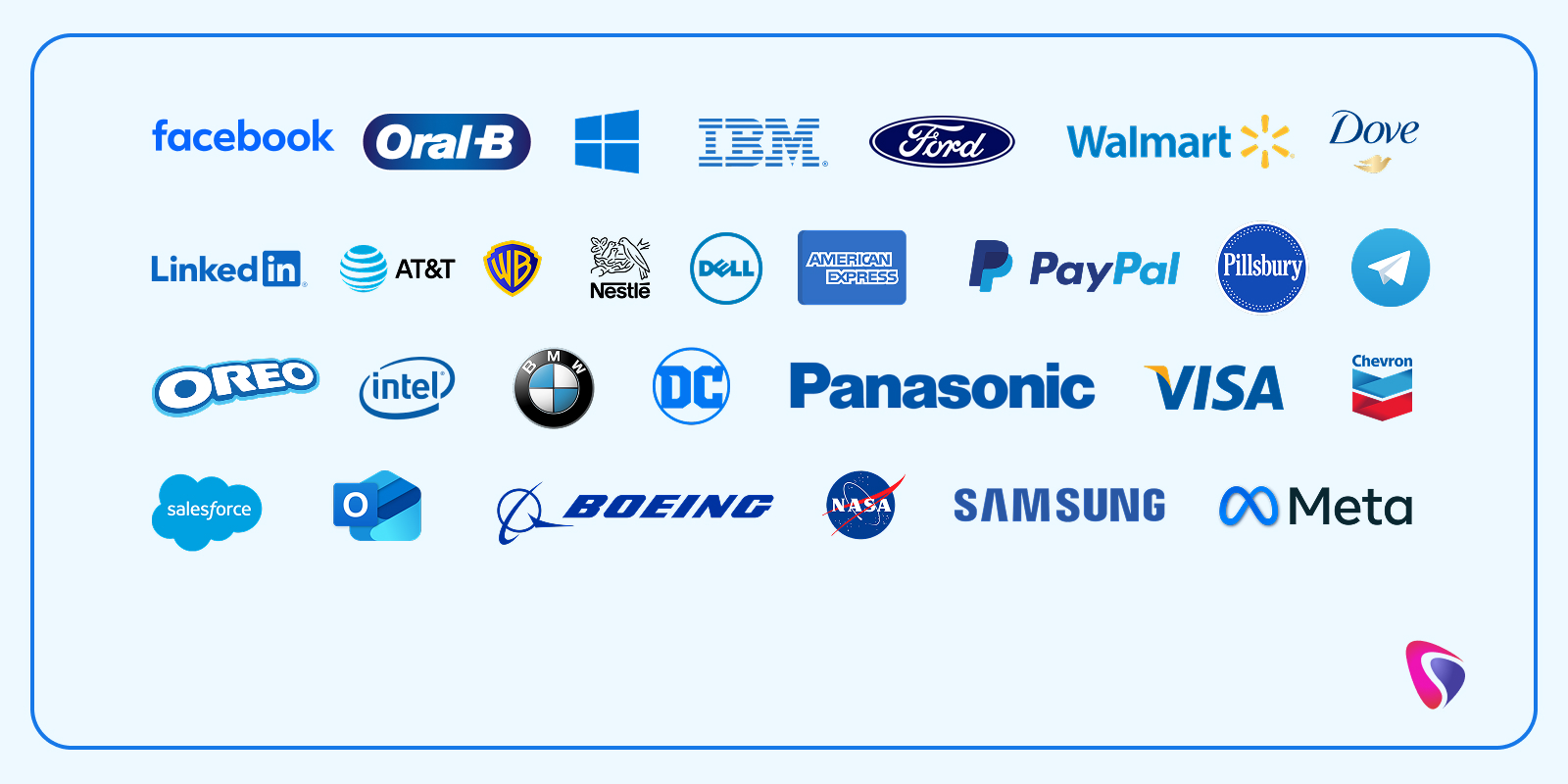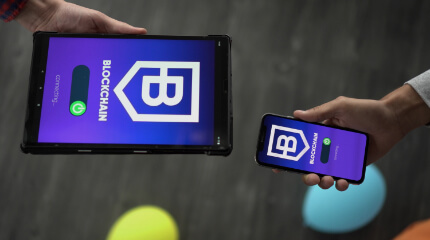
With the rapid advancement in healthcare, organizations are compelled to up the ante. Besides trends, even patients demand cutting-edge medical treatments that align with global standards. The global healthcare app market size is projected to grow from $40.56 billion in 2025 to reach $88.70 billion by 2032. Healthcare institutions, doctors, hospitals, healthcare insurance companies, tech innovators, and many others benefit from these apps.
There’s no denying that a bunch of technologies are revolutionizing healthcare right now, including machine learning, artificial intelligence, blockchain, cloud and serverless platforms, IoT, DevOps, AR, and more. But if we had to pick one standout technology that’s making waves in healthcare app development, it would be Node.js.
Its unmatched scalability, impressive performance for real-time data processing, quick development cycles, and strong interoperability make it the go-to choice for many healthcare app developers. As the healthcare industry continues to evolve, so do the expectations of its users. In this blog, we’re going to take a closer look at why Node.js is particularly well-suited for healthcare app development, exploring its advantages, use cases, challenges, and other essential considerations. Let’s get started!
Recent Developments in Healthcare and the Role of Node.js
Over the past decade, the healthcare market has experienced some significant transformations, largely influenced by the COVID-19 pandemic. Below, you'll find a rundown of the most recent advancements in healthcare.
- Increased Penetration of AI and Machine Learning
In areas like diagnostics, treatment planning, imaging, and drug discovery, AI has emerged as a key player. It facilitates early detection of diseases, customizes care for patients, and accelerates the process of clinical trials.
- Wearables, IoMT, and Remote Monitoring
Smartwatches, biosensors, and other IoT devices are playing an integral role in real-time patient monitoring, managing chronic conditions, and integrating data with EHR systems.
- Telemedicine & Visual Hospitals
Healthcare has really evolved, moving from traditional hospitals to virtual ones and even home care. Now, patients can access top-quality medical services, including video consultations that utilize wearables, AI, and smooth data sharing through cloud platforms.
- Robotics, Automation & Drones
Robots handle logistics in hospitals, performing repetitive tasks like cleaning, moving medical supplies, and delivering them to customers.
- Data Security
In the world of healthcare, blockchain technology is becoming increasingly important for keeping patient data safe. It simplifies the process of controlling and storing that data, while also providing an extra layer of security through robust cybersecurity measures.
- Financial & Workforce Constraints
Workforce shortages, escalating costs, and infrastructure challenges are putting a great strain on healthcare systems across the globe. To tackle these issues, companies are stepping up their investments in AI and other technologies to promote sustainability and ensure fairness.
- Increased Focus on AI
Tech giants like Amazon, Google, Apple, and others are investing greatly in AI tools to enhance diagnostics, drug discovery, clinical documentation, to EHR enhancement.
How Does Node.js Help Healthcare Companies Stay on Top of Trends?
Node.js helps companies stay on top of the latest healthcare trends in the following ways.
- Scalability and Real-Time Performance
Node.js is perfect for handling multiple tasks simultaneously, ensuring real-time data flow from wearables, telemedicine platforms, and remote monitoring systems.
- Unified JavaScript Stack
Node.js is built on JavaScript, which means you don’t have to juggle different languages for both client-side and server-side development. This not only speeds up the development process but also boosts team collaboration and makes onboarding new employees a breeze.
- Security & Compliance Integration
With Node.js, healthcare providers have access to the vital tools and features required to keep patient data secure. This not only protects sensitive information but also helps companies stay compliant with the strict privacy regulations surrounding customer and medical data.
- Speedy Prototyping & Iteration
With a wealth of NPM libraries and a robust developer community, healthcare companies can quickly develop apps without the hassle of building everything from the ground up. Adding in features like AI, blockchain, or IoT is straightforward and speedy, thanks to the ready-made packages at their disposal.
Pros and Cons of Node.js in Healthcare App Development
Below are the pros and cons of implementing Node.js in healthcare app development.
|
Pros |
Cons |
|
High Performance for Real-Time Systems - Ideal for telemedicine, live monitoring, and emergency alerts due to non-blocking and asynchronous I/O. |
Unsuitable for CPU-Heavy Tasks - Tasks like image processing or ML can block the event loop and reduce performance. |
|
Scalability & Microservices-Friendly - Supports modular, scalable healthcare systems through event-driven architecture. |
Third-Party Module Vulnerabilities - NPM packages may compromise HIPAA/GDPR compliance if not carefully vetted. |
|
Cross-Platform & Cloud-Ready - Runs smoothly on major OS and integrates with modern cloud setups. |
Complex Async Code - Callback hell and asynchronous partners can negatively impact code clarity, despite async/await support. |
|
Unified JS Stack & Cost-Efficiency - Shared frontend/backend codebase speeds development and reduces resource needs. |
Unpredictable Ecosystem - Poorly maintained NPM packages and a lack of standard architecture can result in long-term risks. |
|
Strong Community & Tooling - Rich ecosystem enables quick implementation of common healthcare features |
Single-Threaded Limits - CPU-bound tasks require extra tooling to avoid performance bottlenecks. |
5 Use Cases of Node.js in Healthcare App Development
Below are some of the real-world implementations of Node.js in healthcare app development.
1. Telemedicine
- Video Consultation - Node.js allows you to jump from one task to another without having to wait for the previous one to wrap up. It can manage several tasks simultaneously and processes data in real-time without pausing the application (thanks to its non-blocking I/O). This capability is ideal for low-latency video calls, real-time chatting, interactive whiteboards, and collaborative work.
- Session Orchestration - Handles all the behind-the-scenes tasks for video calls, such as starting the session, sharing metadata, and confirming users through tokens. This guarantees that we maintain solid HIPAA compliance to safeguard patient information.
2. EHR, EMR & Interoperability
- FHIR Compliant Gateways - Older legacy healthcare systems use the HL7 format. Using Node.js, companies can convert it to the modern FHIR format, allowing them to request and share data quickly.
- EMR System Development - Using APIs to connect with different medical systems allows for seamless storage and retrieval of data, such as lab results and imaging, while ensuring that all regulatory requirements are met. Node.js makes this whole process a breeze.
3. Microservices, Scalability, & Architecture
- Modular Microservices - For companies creating healthcare applications, adopting a microservices architecture with Node.js can be incredibly beneficial. It enables quick scaling and smooth updates, all while keeping other parts of the system running seamlessly.
- High Performance and Scalability - With its event-driven design, Node.js can efficiently manage a large number of user requests and data updates, delivering excellent performance. This capability makes Node.js particularly well-suited for telemedicine and applications that depend on real-time data.
4. Media Processing, Monitoring & UI Richness
- Streaming and Imagine Workflows - Node.js makes it possible to handle large medical files even before the uploading or streaming is fully finished. This way, the app can pull out essential data from those files in real-time, all while staying compliant with HIPAA privacy regulations.
- Single-Page Apps (SPAs) - Perfect for ensuring rich, responsive user experiences for patients and healthcare service providers.
5. Patient Management & Telemetry
- Appointment Scheduling & Reminders - Node.js shines when it comes to multitasking, effortlessly managing things like appointment bookings, SMS reminders, and push notifications, all while keeping applications responsive and scalable.
- Real-Time Telemetry & Remote Monitoring - With its strong integration capabilities with wearables like fitness bands and smartwatches, Node.js makes it easy to track patient data in real-time. This means that doctors can quickly respond when emergencies arise.
7 Challenges of Using Node.js for Healthcare App Development
Below are some of the biggest challenges of using Node.js for healthcare app development.
1. Handling Sensitive Patient Data (HIPAA/GDPR Compliance)
Think of Node.js as a runtime environment designed to run JavaScript. However, it doesn’t come with any built-in security measures or compliance features. Failing to prioritize compliance and security could lead to some serious legal complications.
Solution
- Use end-to-end encryption (AES-256, TLS 1.3).
- Implement role-based access control (RBAC) and audit logs.
- Store data in HIPAA-compliant cloud services (e.g., AWS HealthLake, Azure Healthcare APIs).
- Perform security audits regularly using tools like npm audit, Snyk, and OWASP ZAP.
2. Managing Vast Real-Time Data Streams from IoT/Medical Devices
Monitoring important metrics such as heart rate and blood pressure in real-time through wearables or IoT devices can pose a challenge for Node.js. An influx of requests might overload the servers, cause delays in processing vital information, or even deplete resources.
Solution
- Use message brokers such as RabbitMQ or Kafka for stream processing.
- Implement backpressure handling with Node.js streams.
- Instead of sending raw data to the central cloud server, it makes sense to process the data in a nearby edge service or directly on the wearable device.
3. Concurrency and Event Loop Booking
CPU-intensive tasks such as extensive medical scans or processing large images can block the Node.js event loop, causing a dip in performance.
Solution
- Node.js is reputed for its asynchronous processing, but it falters when it comes to performing tasks requiring high CPU processing power.
- It makes sense to run demand tasks in the background in worker threads or using a service like Python, ensuring the app doesn’t slow down and stays responsive.
- Use Node.js clustering to use several CPU cores.
4. Legacy System Integration
Even now, many hospitals and healthcare institutions use obsolete systems such as HL7 v2 or custom EHR systems, which can complicate integration.
Solution
- Use existing FHIR/HL7 Node.js libraries.
- Build middleware APIs that help JSON/REST formats share data with legacy systems and vice versa.
- Consider API gateways like Kong or Apigee for protocol transformation.
5. Package Security & Dependency Management
An app built on Node.js relies heavily on NPM packages. Developers love using these packages because they save time and effort by not having to code everything from scratch. However, there’s a catch. If any of these packages have a security vulnerability, it could put sensitive data at risk, including private patient information.
Solution
- Use NPM audit and Synk regularly.
- Lock dependencies or freeze the exact versions of each package using npm shrinkwrap. This ensures that the healthcare app will install the same code, regardless of the time and location.
- Avoid unmaintained or low download count packages.
6. Scalability to Handle High Traffic
If the healthcare app isn't set up to tackle challenges like a flood of users making video calls or joining live consultations, it might suffer from performance lags or even crash.
Solution
- Use WebRTC for video calls and Socket.io for real-time chat.
- Deploy Node.js with horizontal scaling on Kubernetes or Docker Swarm.
- Implement load balancing
7. Latency in Critical Situations
In healthcare, responding to alerts quickly is non-negotiable. Any delay can result in loss of lives.
Solution
- Use in-memory data stores such as Redis for quick lookups.
- Prioritize low-latency message queues.
- Implement monitoring and alerting systems, Prometheus, and Grafana.
10 Best Practices for Implementing Node.js for Healthcare App Development
Below are some of the best practices to implement Node.js in healthcare app development.
- Use HIPAA/GDPR-compliant frameworks and encryption for data protection.
- Implement JWT or OAuth 2.0 for secure user authentication.
- Use HTTPS/TLS for all API communications.
- Apply input validation and sanitization to prevent security threats.
- Employ microservices for scalability and maintainability.
- Integrate robust logging and monitoring for error tracking.
- Use load balancing and clustering for high availability.
- Implement rate limiting to prevent API abuse.
- Keep dependencies updated and scan for vulnerabilities.
- Conduct regular penetration testing and security audits.
What is the Cost of Implementing AI in Node.js?
Now that we have understood the benefits, use cases, and the technicalities associated with using Node.js for healthcare app development, it is time to examine the costs.
Costs Based on Complexity
|
App Complexity |
Details |
Estimated Costs |
|
MVP App |
Proof of concept with limited users |
$50,000 - $150,000 |
|
Medium Complexity App |
Production app with EHR integration, multiplatform (10k - 100k users) |
$250,000 - $1million |
|
Complex/Enterprise Apps |
Deep EHR integrations, advanced security, high SLAs, multi-tenant |
$1M - $5M |
Detailed Cost Breakdown Node.js Implementation Costs
|
Category |
Description |
Estimated Costs (USD) |
|
Discovery & Product Design |
Stakeholder workshops, user research, wireframes, UX for clinicians/patients, security/privacy threat model |
Small MVP - $5k–$15k Enterprise - $30k–$60k Overall - $5k–$60k |
|
Development |
Node.js backend (APIs, auth, business logic, FHIR adapters, audit logging) plus frontend/mobile (React/React Native/Flutter) |
Backend - Small MVP: $25k–$80k - Medium: $80k–$400k - Enterprise: $300k–$1.5M+
Frontend/Mobile +$20k–$300k |
|
Compliance and Legal |
HIPAA, BAAs, policies, third-party HIPAA readiness consultants, and audits |
Small - $10k–$30k Enterprise - $50k–$200k Overall - $10k–$200k |
|
Security Engineering and Testing |
Threat modeling, secure coding, static analysis, pentests, monitoring, encryption, and key management |
$10k–$250k Penetration test - $5k–$50k Ongoing security ops - $2k–$20k/month |
|
Infrastructure |
HIPAA-eligible hosting (AWS GovCloud, Azure, GCP), DBs, backups, KMS, VPCs, logging, redundancy |
Small MVP - $500–$2k/month Production -$2k–$15k/month Enterprise - $15k–$30k+/month |
|
Integrations |
EHR, labs, medical devices, IoT. FHIR/HL7 APIs or legacy adapters |
$10k–$500k+ Single modern EHR $10k–$75k |
|
Testing and Validation |
Clinical validation, QA, regulatory compliance, accessibility, and automated test suites |
$10k–$150k |
|
Third-Party Services & Licensing |
Telehealth (TokBox, Twilio), SMS, payment processors, analytics, identity providers (Auth0, Okta) |
$1k–$50k+/year
Telehealth video - Hundreds to thousands/month |
|
Maintenance, Monitoring, and Support |
Bug fixes, upgrades, patches, ops, SLAs. |
15–25% of development cost/year |
|
Contingency and Project Management |
Extra budget for regulatory changes, scope creep, and integration issues |
10–25% of the total project cost |
5 Tips to Limit Costs When Implementing Node.js in Healthcare
Below are some valuable tips that companies can use to limit costs when creating healthcare apps with Node.js.
- Strict MVP - Focus on an MVP that limits PHI handling and EHR integrations. This reduces compliance and interpretation-related costs.
- HIPAA-BAA Friendly Managed Services - Using AWS, Azure, GCP, and other cloud services with built-in mechanisms to ensure regulatory HIPAA-BAA compliance.
- FHIR-First Integration Strategy - Instead of creating custom connectors for each EHR or system, adopt an FHIR-based integration strategy to cut costs.
- Outsource Non-Development Work - Outsource tasks such as UI design, infrastructure setup to specialists while delegating development and core work to in-house employees.
- Plan for Ongoing Costs - Ongoing costs can account for 15% to 25% every year. Plan for it in advance.
Final Thoughts
Building a healthcare application using Node.js is a fantastic choice for companies, as it guarantees real-time data processing, scalability, and super-fast performance. Such features are crucial in today’s environment. With its event-driven architecture, Node.js can help speed up the time it takes to launch products while managing costs and ensuring quick, secure data exchanges between patients, systems, and healthcare professionals.
That said, businesses must also take into account factors like regulatory compliance, the long-term maintenance of the app, and the implementation of strong security practices, all of which require a deep understanding and solid engineering skills. Node.js gives developers the tools they need to create secure applications, but it doesn’t offer out-of-the-box solutions for planning and design. Companies will need to use specialized libraries, security modules, or external services to get the job done.
Sounds like too much work? No worries, Hyperlink InfoSystem, a reputed healthcare app development company, is here to help. With 12+ years of app development experience in diverse industries and having completed over 3000+ projects in the past decade, we have a 99% satisfaction rate. Speak to one of our experts to see what we can do for you.
Schedule a Consultation Today!
FAQs
1. Does Node.js handle sensitive patient data?
When developing healthcare apps, developers use Node.js to process, store, and exchange patient data, but since the data is confidential, regulatory compliance is essential. Companies can create robust Node.js applications that comply with regulations such as HIPAA and GDPR by implementing the following measures.
- Encryption for data in transit (HTTPS/TLS) and at rest (AES-256).
- Access control with authentication and role-based permissions.
- Secure databases that meet compliance standards.
- Audit logging to track who accessed what information and the exact time.
2. How much time does it take to build a healthcare app using Node.js?
The time to develop a healthcare app using Node.js depends on several factors, such as app complexity, compliance needs, team size, and more. Below is the estimated time to build a healthcare app using Node.js.
- Basic MVP - 3 to 4 months
- Mid-Level App - 6 to 9 months
- Full-Featured Enterprise App - 9 to 15 months.
3. How should I hire Node.js developers for a healthcare app project?
Below are some simple steps to hire Node.js developers for building a healthcare app.
- Define the scope and compliance needs in advance.
- Check for healthcare domain experience.
- Evaluate if the professional has Node.js-specific experience.
- Evaluate security-first thinking.
- Implement a hiring process that prioritizes real-world problem-solving.
- Choose an engagement model based on the project phase.
- Verify references and portfolio.
- Look for soft skills and collaboration.
4. Who should consider developing a healthcare app powered by Node.js?
Any healthcare institution or business that needs fast, real-time, and scalable solutions should consider developing an app based on Node.js. These healthcare institutions include the following.
- Hospitals and Clinics - Telemedicine platforms or remote patient monitoring systems that require quick and reliable communication.
- Health-Tech Startups - Build AI-powered wellness apps or diagnostics with real-time processing features.
- Fitness and Wearable Device Companies - Apps that integrate live tracking of health metrics from smart devices.
- Insurance Companies - Create secure, user-friendly patient portals for claims, reports, and medical history access.
- Medical Research Organizations - Managing and analyzing huge volumes of data in real-time.
- Healthcare-Focused Project - An environment where instant updates, high scalability, and secure handling of sensitive medical records are necessary.
5. Is Express the best framework for healthcare APIs, or are there better options?
Express is a mature framework and is most popular with developers. More recent frameworks like Fastify deliver exceptional performance with lower overheads. Compared to other frameworks, Fastify can handle more requests per second while consuming less processing power. Additionally, Express has been in existence since 2010, offering an extensive variety of tutorials and other learning materials along with middleware packages and community support.


















